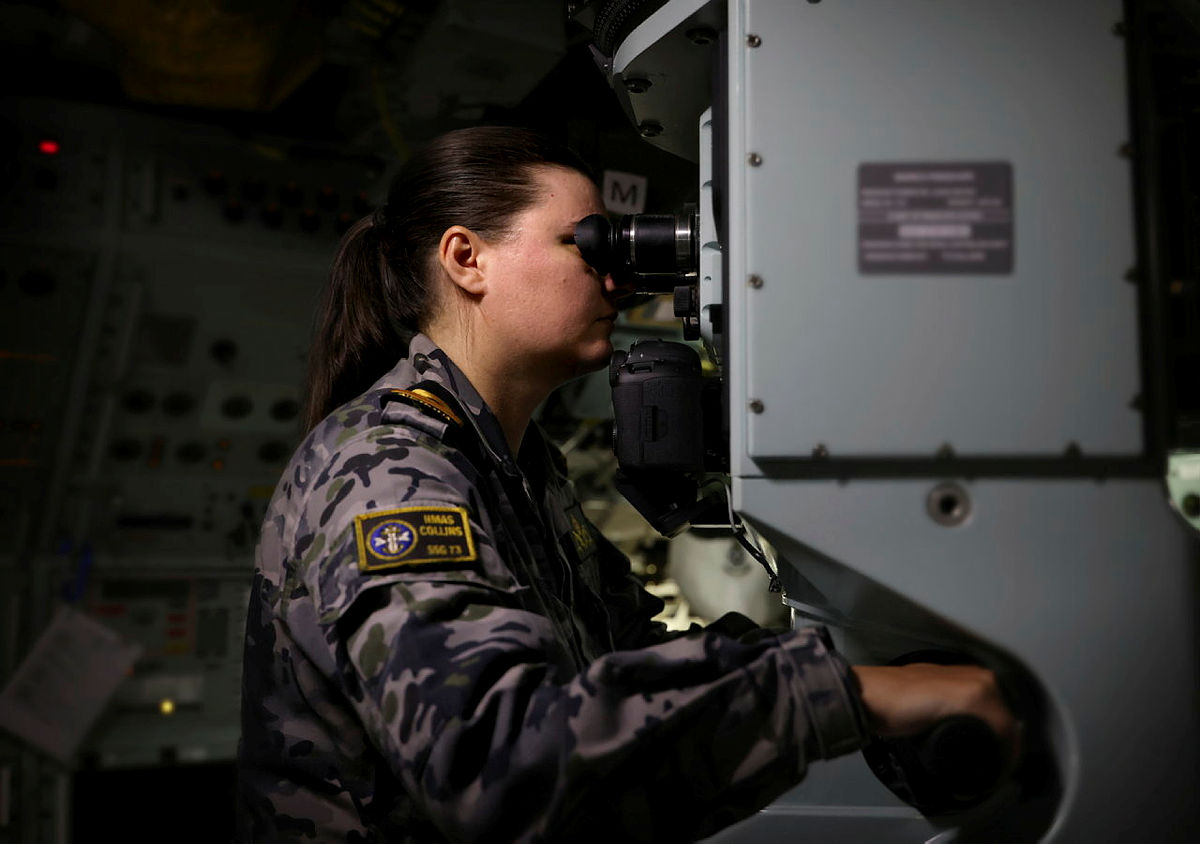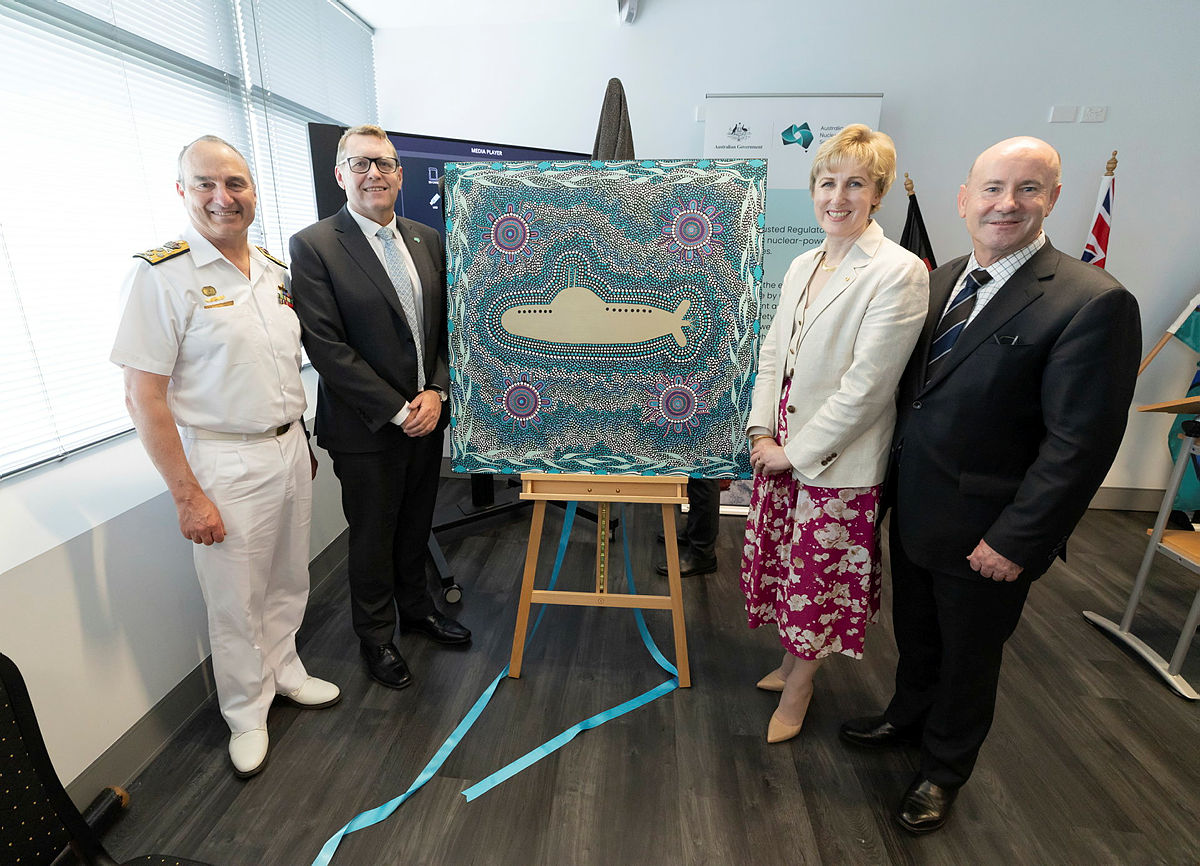When AUKUS pact between the US, UK and Australia was unveiled in September 2021, it was heralded as a game-changer in the context of Indo-Pacific security architecture. In this op-ed, Rear Admiral Sanjay Roye AVSM VSM (Retd) who served in Indian Navy as a Captain of Akula-class SSN INS Chakra, argues that for Australia, its maritime deterrence posture, regional credibility, and sovereign defence planning now rest on foreign execution.
Under AUKUS Pillar One, Australia has been promised an optimal pathway to nuclear-powered attack submarines (SSNs), first through personnel engagement and then increased SSN port visits under Submarine Rotational Force – West (SRF-West) by 2027. This was to be followed in the second phase with Australia’s planned acquisition of US-built Virginia Class boats in the 2030s, and later via the co-development of a new class (SSN-AUKUS) in partnership with the US and the UK which will help Australia get its own eight SSNs in 2040s and onwards.
The ambition was historic; a step-change in Australia’s undersea warfare capabilities, aimed squarely at counterbalancing China’s rapid naval expansion. Yet, as the strategic intent meets industrial and political reality, the projected AUD 368 billion whole-of-nation AUKUS project today finds itself navigating through turbulent waters. The vision remains, but the execution of the project is now under growing scrutiny and doubts.
The AUKUS treaty is under review
The tide began to turn in mid-2025 with the return of Donald Trump to the White House. Almost immediately, his administration launched a review of the AUKUS pact, signaling a shift from enthusiastic commitment to calculated reconsideration. As reported by The Washington Post, this assessment, led by Trump’s defence policy chief Elbridge Colby, aimed to determine whether AUKUS aligned with the administration’s renewed “America First” doctrine. The core question under investigation being asked is – if the US can afford to export high-end submarines to Australia without impairing its own naval build-up?
While the US Defence Secretary Pete Hegseth offered reassurances that the US President remains supportive, the tone was unmistakably cautious. According to Politico, concerns were raised around overstretched US shipbuilding capacity, fragile supply chains, and the viability of meeting delivery schedules. On Australia’s end, financial commitment has been unwavering, with Canberra delivering USD 1.67 billion. Yet despite these tangible investments, doubts persist about whether the US can follow through; on project scope delivered on time and in full.
Warnings from within the US Navy
The alarm bells have been ringing louder from within the very institution responsible for fulfilling the pact. At his July 2025 confirmation hearing, Admiral Daryl Caudle, nominated to serve as Chief of Naval Operations (CNO), offered a candid assessment: unless the US industrial base undergoes “transformational improvement,” meeting both American and AUKUS demands would be a non-starter. The need was to scale up the production by almost twice its present capacity.
Admiral Caudle pulled no punches in his testimony. Incremental reforms won’t suffice. “This is not a matter of tweaking the system,” he told the Senate Armed Services Committee. “A 10 percent improvement won’t get us there. A 20 percent won’t either.” His concerns are mirrored by Rear Admiral Jonathan Rucker, who warned that systemic delays in US submarine production are becoming endemic, exacerbated by persistent backlogs and an overtaxed supplier network.
The industrial bottleneck
What underpins these warnings is a stark industrial reality. The US submarine-building ecosystem, centered around Electric Boat in Connecticut and Newport News in Virginia, is already straining to deliver existing orders. As Defense One reported in July 2025, these facilities face acute labour shortages, a dearth of qualified welders, limited dry dock availability, and bottlenecks across the supplier base. The result is a system operating near its breaking point.
Though remedial efforts are in motion related to expanding fabrication facilities, adopting modular build approaches, and ramping up workforce training; they are slow-burning solutions. The timeline mismatch is glaring. The US Navy’s submarine fleet, which now numbers 49, is projected to dip to 35 by 2032. That is precisely when Australia hopes to get Virginia Class submarines. Australia is planned to acquire from three to five Virgina class boats. The opinion is still divided whether these will be new boats or those already in use. This industrial slide risks becoming the Achilles’ Heel for AUKUS.
Australia faces the clock
Canberra’s strategic calculations rest on an increasingly uncertain delivery timeline. Australia’s current Collins Class submarines are being refurbished for extended service, and efforts are being made to extend their lives to address the gap under Optimal Pathway. The Virginia Class acquisitions were meant to serve as a bridging capability until the SSN-AUKUS submarines arrive in the 2040s. That bridge is now at risk of collapsing before it’s even built. In July 2025, The Guardian cited Admiral Caudle who has frankly warned that without significant acceleration in American production, the promised transfer of three (or five) Virginia Class boats to Australia cannot be guaranteed. Malcolm Turnbull, a former Australian Prime Minister, echoed this anxiety, stating that the probability of Australia receiving even one US submarine under the present plan is very much in doubt.
The implications are profound. If no nuclear-powered boats arrive before the mid-2030s and the Collins fleet goes into obsolescence, Australia may be left exposed during a critical window with no submarine fleet of its own. However, the critics are still divided on if a service life extension for Collins Class submarines would be sufficient to address the gap, particularly in an increasingly contested Indo-Pacific maritime domain.
A decision that still echoes
As the delivery of US and UK submarines faces delays, the ghosts of past decisions have returned to haunt Canberra again. The AUKUS pact came at the expense of an abrupt cancellation of Australia’s previous Euro 56 billion submarine deal with France’s Naval Group to build 12 conventionally powered submarines—customised variants of the Scorpène-class. That agreement had advanced to detailed design stages when it was abruptly terminated in 2021, just before the announcement of AUKUS pact in September 2021. France was blindsided, and bilateral ties suffered a diplomatic jolt between Macron and Morrison.
At the time, the then Scott Morrison administration argued convincingly that nuclear propulsion offers unmatched range and stealth advantages, rendering diesel-electric designs obsolete for Australia’s needs. But as timelines have got stretched and the US submarine production bottlenecks still persist post-Covid 19 pandemic scenario, questions are resurfacing again the validity of AUKUS for Australia in the long run. Le Monde reported in late 2024 that Naval Group had already built a robust industrial footprint in Adelaide and was preparing for manufacturing when the plug was pulled.
In hindsight, defence experts and security critics now contend that jettisoning the French deal left Australia without a viable fallback. A dual-track approach of pursuing both AUKUS and the French program in parallel might have preserved optionality. Instead, Australia placed high stakes bet on a nuclear-powered future whose delivery now hinges on foreign industrial rejuvenation and uncertain and unpredictable US political winds.
Conclusion
AUKUS was seen as a beacon of strategic alignment among like-minded democracies, and a maritime hedge against great power competition in the Indo-Pacific. But in 2025, its success no longer hangs on geopolitical will alone. It now faces its toughest challenge yet in the form of the grind of naval industrial production, political recalibration, and supply chain constraints.
The US must orchestrate its most ambitious naval build-up since the Cold War to fulfil its end of the bargain. This demands not just funding, but a wholesale reinvigoration of its naval shipbuilding sector, driven by sustained leadership and bipartisan resolve, no small feat in today’s fractious Western world.
For Australia, its maritime deterrence posture, regional credibility, and sovereign defence planning now rest on foreign execution.
(Rear Admiral Sanjay Roye AVSM VSM (Retd) is a former Captain of Akula-class SSN INS Chakra and Flag Officer Commanding Gujarat Naval Area. He is a keen follower of events in the Indo-Pacific and Oceania regions. He may be contacted at [email protected] for further engagement. Views expressed are his own.)



